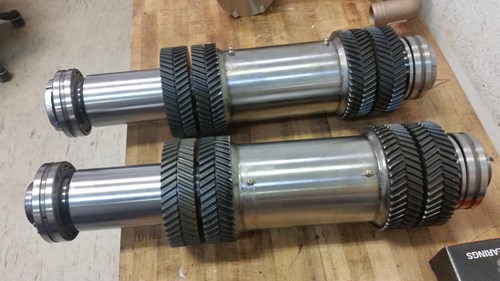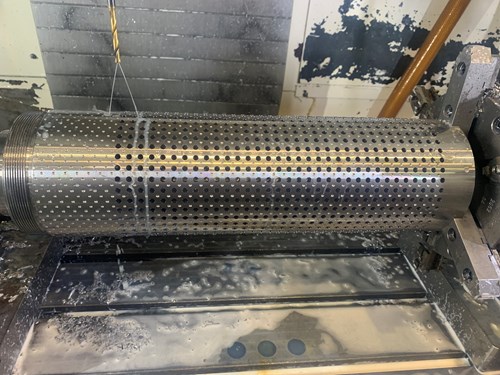CNC Turning
Whether you need a single part, a prototype, or a large-scale production run, Sparkman Industries offers cost-effective CNC turning services for all of your lathe machining needs. Economical for both long and short runs, our extensive knowledge of the turning process enables our team of machinists to manufacture your parts with extensive bore depths while maintaining tight tolerances and smooth surface finishes. Get in touch with us today and let us know how we can serve you.
Click here for a downloadable version of our equipment capabilities.
Find out more about our machining division:
What is CNC Turning?
CNC turning is a manufacturing process by which CNC lathe machines (sometimes called horizontal turning centers) use various cutting tools to make cuts to a piece of material, typically of a cylindrical profile. Consequently, CNC turning is usually done with round rod material, although bar stock can also be used in some cases.
In CNC turning, the workpiece is held on a horizontally oriented spindle rotating at high speed. The cutting tool makes cuts to the perimeter of the workpiece, forming the geometry. Unlike CNC milling, the cutting tool itself does not rotate but still moves along X, Y, and Z axes. While not quite as common as CNC milling machines, lathe machining is still extensively used due to its typically higher rate of production at lower cost per unit than mills. However, lathe machines still face the same design restriction as milling machines and are limited to cutting at 3 axes, as well as usually being limited to workpieces with a cylindrical profile. To mitigate this limitation, workpieces are often CNC milled separately to the desired shape if necessary.
CNC Turning Part Design
Considering the operation and horizontal orientation of a typical CNC turning center, CNC turning is particularly suited to machine parts with rotational symmetry. Some common uses are:
Shafts and Axles
CNC turning is ideal for manufacturing shafts and axles used in various industries, such as automotive, machinery, and aerospace. These cylindrical components require precision in terms of diameter, length, and concentricity.
Bushings and Bearings
CNC turning is frequently used to produce bushings and bearings that provide support and reduce friction between moving parts. The precise tolerances and smooth surface finishes achievable with CNC turning make it suitable for manufacturing these critical components.
Connectors and Couplings
Many connectors and couplings, such as threaded connectors, flanges, and quick-release couplings, have cylindrical profiles. CNC turning allows for accurate machining of features like threads, grooves, and mating surfaces, ensuring proper fit and functionality.
Fasteners
CNC turning is commonly employed to manufacture fasteners like bolts, screws, and studs. These cylindrical components require precision machining for thread formation, chamfers, and other features, which can be achieved efficiently with CNC turning.
Hydraulic and Pneumatic Components
Many hydraulic and pneumatic systems utilize cylindrical components such as pistons, cylinders, and valve bodies. CNC turning can achieve the required dimensional accuracy, smooth surface finishes, and intricate features needed for these components to operate effectively.
Electrical Contacts
CNC turning is often utilized to manufacture electrical contacts and connectors that require high precision and quality. It enables the creation of accurate profiles, threads, and contact surfaces, ensuring reliable electrical conductivity.
CNC Turning Applications
With its ability to efficiently produce cylindrical components, CNC turning finds numerous applications across various industries. Some common applications include:
Automotive Parts
CNC turning is extensively used in the automotive industry to manufacture components such as shafts, pistons, cylinders, gears, brake system parts, connectors, and assorted engine components
Aerospace Components
CNC turning plays a vital role in aerospace manufacturing, producing critical components like landing gear parts, turbine shafts, engine components, hydraulic and pneumatic system parts, and structural components.
Fluid and Gas Handling Equipment
CNC turning is involved in producing components for fluid and gas handling equipment, including fittings, connectors, couplings, nozzles, and flow control devices.
Defense and Firearms
CNC turning is employed in the manufacturing of defense-related components like firearm barrels, triggers, sights, and other precision parts used in firearms and military equipment.
Tooling and Fixturing
CNC turning is used to produce tooling components such as inserts, cutting tools, tool holders, and jigs used in various machining operations. It is also utilized in creating fixtures and workholding devices for secure and accurate part positioning during machining processes.



